The strangest thing about the ground-breaking Saturday morning children’s show The Multi-Coloured Swap Shop is that I can still perfectly remember the phone number that they gave out: oh one, eight double one, eight oh five five. I’m not sure why it is so memorable, perhaps it’s the rhythm of it or perhaps because it was also used by Swap Shop’s successor, Saturday Superstore and so was on our screens for many years. Either way I’m convinced that in many decades time I will be on my deathbed, unable to remember my own children’s names but ask me ‘What was Swap Shop’s telephone number?’ and I’ll reply with perfect clarity. I’ll also be able to sing the theme tune to No. 73 as well, but that’s a different story…
The Multi-Coloured Swap Shop (I’m just going to type Swap Shop from now on as it will soon get tiresome writing out the complete title – and once it got going it was only really referred to as that anyway…) was a hugely innovative idea from the BBC – a nearly three hour long slot on Saturday mornings, almost completely live and which gave children the chance to ring in and speak to the presenters and the celebrities who dropped by. It had never been done before so the Beeb knew it was taking a risk but it paid off, as Swap Shop shaped Saturday mornings for future generations of kids.
It was in 1976 that money was set aside for this new style of weekend live television. Rosemary Gill, producer and then deputy editor of Blue Peter, got together with Biddy Baxter (the then editor of Blue Peter) and Edward Barnes, producer of BBC show Z-Shed (more of which in a moment) and later, Deputy Head of Children’s Programmes, to devise the format. Gill was convinced that the idea of a swap was a winner: she knew how much children in the playground loved collecting and swapping items and she felt that this was a concept that could work on television.
Back to Z-Shed now: going out in the afternoons it was a BBC experiment with phone-ins. Presented by Radio 1 DJ Noel Edmonds it allowed children to phone in and speak with experts about a range of topics affecting their lives. Gill heard the voices that took part and realised that they could be considerably more to the point than many adults; this could be a recipe for a really interactive programme. Barnes was sure that Edmonds, despite his limited experience on the screen, should be the one to present it. To help him carry the three hours would be Keith Chegwin (currently undertaking small acting roles) and John Craven (presenter of kid’s news programme Newsround).
What we now know, with hindsight, was that although this was, at the time, considered a crack presenting team it was in fact simply a recipe for beards, horrendous jumpers and high pitched giggles. Actually, I’m being a bit unfair. From 2 October 1976 until 27 March 1982 they brought, Edmonds and Chegwin especially, a freshness and originality to the television screen – a hectic (although not as chaotic as its Saturday morning rival Tiswas) mix of phone-ins, outside broadcasts, music, celebrity chats and cartoons. Gravitas was added by Craven, who brought news items, relevant to children, to the studio, although it was never questioned why this segment was called ‘News Swap’ when nothing was actually swapped in that bit. Although it could have been that the audience swapped their groans for John’s terrible jokes of course…
The original intention of the show was for the kids in the audience, as well as the children who would phone in from home during the show, to have a chance to display their collections whilst adding to them by swapping other items. This was soon broadened into anybody being able to swap anything they liked (a Rubik’s Cube for a set of Deelyboppers for example); they didn’t have to have any kind of logic behind them, which led to some amusing items featuring.
Swapping could be done in the studio (with the best items up for a swap entered on to the top ten board) but the bit everybody wanted to see was The Swaporama: Noel would call out ‘Where are you Keith?’ and the outside broadcast unit would find him hosting a swap from a different part of the country each week. Kids could simply rock up and swap their unwanted things with others. It was a massively popular part of Swap Shop; there would commonly be a couple of thousand children turning up. In a canny move by the BBC the venue for The Swaporama would be the same as whatever sporting event they were filming later on in the day; this meant only one outside broadcast unit was needed (the first Swaporama came from Cardiff Arms Park). A third swap option was offered by a visiting celebrity; they would bring something in that could be swapped with one lucky viewer. Or unlucky viewer if you were the person who got theme tune writer Mike Batt’s enormous cardboard camel.
The three male presenters coped by themselves for two series but for the third, then-student Maggie Philbin was drafted in to provide a floating role; sometimes she’d present in the studio and on other occasions she’d be out on the road with Keith. It was here, of course, that she and Keith fell in love, which led to their subsequent eleven year marriage.
Alongside the main four presenters there were also other regulars in the studio: Posh Paws (although strictly speaking this was spelt Pohs Paws – read it backwards…) was a large purple dinosaur which sat on the desk next to Noel and did very little apart from roar occasionally and wear some natty little outfits. Igor was a bit more animated: he was a disembodied black hairy hand which passed things to the presenters from behind the sofa and there was also a lamb who appeared to fill time when something technological went wrong. Favourite of all was the always hidden Eric. Apparently living permanently in the rafters of the building, the show’s technician’s main role was to lower a globe down into the studio. The globe contained the postcards (yep, this was way before email) sent in from viewers in answer to the show’s competition questions.
(Oh, and there was also a regular appearance from television cook Delia Smith.)
Whilst the new style Saturday morning format was a massive success, there is not much evidence around today to support this as the antiquated Quad tapes that they were originally recorded on were wiped in the late 1980s. Although pretty much out-of-date by then in the UK, Australia were still using them and the BBC saw money to be made in selling them on. A few clips do still exist, however, mainly from people’s own video recordings.
One of these is, amusingly, a vaguely uncomfortable interview between Edmonds and the Blondie duo, Debbie Harry and Chris Stein. Filmed, apparently, in an audience-free room (there’s no background noise at all, leaving the entire conversation completely atmosphere-free) Edmonds veered between asking Harry vaguely inane questions and sniping bitchily at Stein. Viewers also phoned in with probing questions such as ‘Do you do any sport?’ to which Harry fascinatingly replied ‘Not really. I have a bike.’ Phew, exhilarating stuff.
Not just presenters, Edmonds, Chegwin and Philbin briefly became the pop group Brown Sauce, releasing their only hit single ‘I Wanna Be A Winner’ in 1981. Surprisingly, it hit number 15, remaining in the Top 40 for nine whole weeks and spawning an appearance on Top of the Pops. It was, obviously, truly awful, but this being the 1980s nobody noticed.
In 1982, after six series and 146 episodes achieving high ratings the Multi-coloured Swap Shop closed its doors and the swapping stopped. The presenters, most particularly Noel Edmonds, felt it was time for them all to move on to new projects and the BBC refreshed the Saturday slot with Saturday Superstore. Mike Read (the DJ not the ‘Paaaaat!’ one from Eastenders) took over the helm, (with Keith, John and Maggie staying on) and the mayhem continued, bringing with it the talent spot ‘Search for a Superstar.’ I’m pretty sure they didn’t find one, unless you count that girl who sang about ‘being in love when you’re eight an’arf’ or something like that.





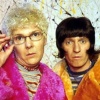
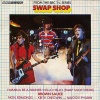
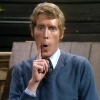
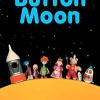
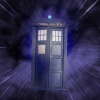
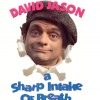
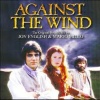
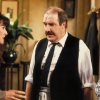
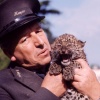
Do You Remember Multi-Coloured Swap Shop?
Do You Remember Multi-Coloured Swap Shop?